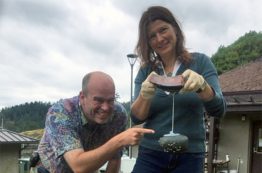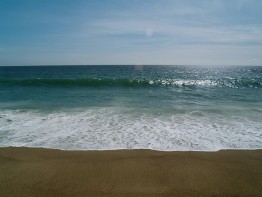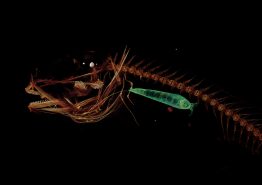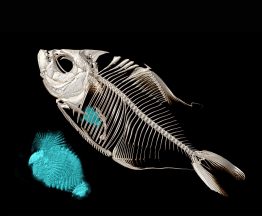The finger-sized Northern clingfish employs one of the best suction cups in the world. A small disk on its belly can attach to wet, slimy, even rough surfaces and hold up to 230 times its own body weight. A University of Washington team inspired by the clingfish’s suction power set out to develop an artificial suction cup that borrows from nature’s design.
Read more at UW News »Five curious things we now know about our oceans
We swim in it, the sun sets over it, love songs are written about it and it covers 70% of the earth’s surface, yet we know so little about our deep blue sea. Oceans inspire some of the most puzzling questions and greatest discoveries on earth, and here at UW, researchers from across the sciences are dedicated to better understanding what’s in them, what’s changing about them, and how we can preserve these essential parts of our habitat.
Read more »World’s deepest fish named to 10 ‘remarkable new species’ list for 2017
The deepest-dwelling fish in the sea just got one more bragging right. The World Register of Marine Species, or WoRMS, has named the Mariana snailfish one of its 10 “remarkable new species” discovered in 2017. The team that discovered and named the small fish that lives at ocean depths of up to 8,000 meters (26,200 feet) includes Mackenzie Gerringer, a postdoctoral researcher at the UW’s Friday Harbor Laboratories.
Read more at UW Today »Friday Harbor Labs’ Megan Dethier receives Seattle Aquarium Conservation Research Award
Each year, the Seattle Aquarium recognizes individuals who are leaders in marine research, especially in the Pacific Northwest. This year that honor goes to Megan Dethier, a longtime researcher at the College of the Environment’s Friday Harbor Laboratories. She was recognized alongside George Willoughby from Friday Habor Labs’ Advancement Board, who received the Scott S. Patrick Award for his volunteer service.
Read more »Scale-eating fish adopt clever parasitic methods to survive
A small group of fishes — possibly the world’s cleverest carnivorous grazers — feeds on the scales of other fish in the tropics. The different species’ approach differs: some ram their blunt noses into the sides of other fish to prey upon sloughed-off scales, while others open their jaws to gargantuan widths to pry scales off with their teeth. A team led by biologists at the University of Washington’s Friday Harbor Laboratories is trying to understand these scale-feeding fish and how this odd diet influences their body evolution and behavior.
Read more at UW Today »





